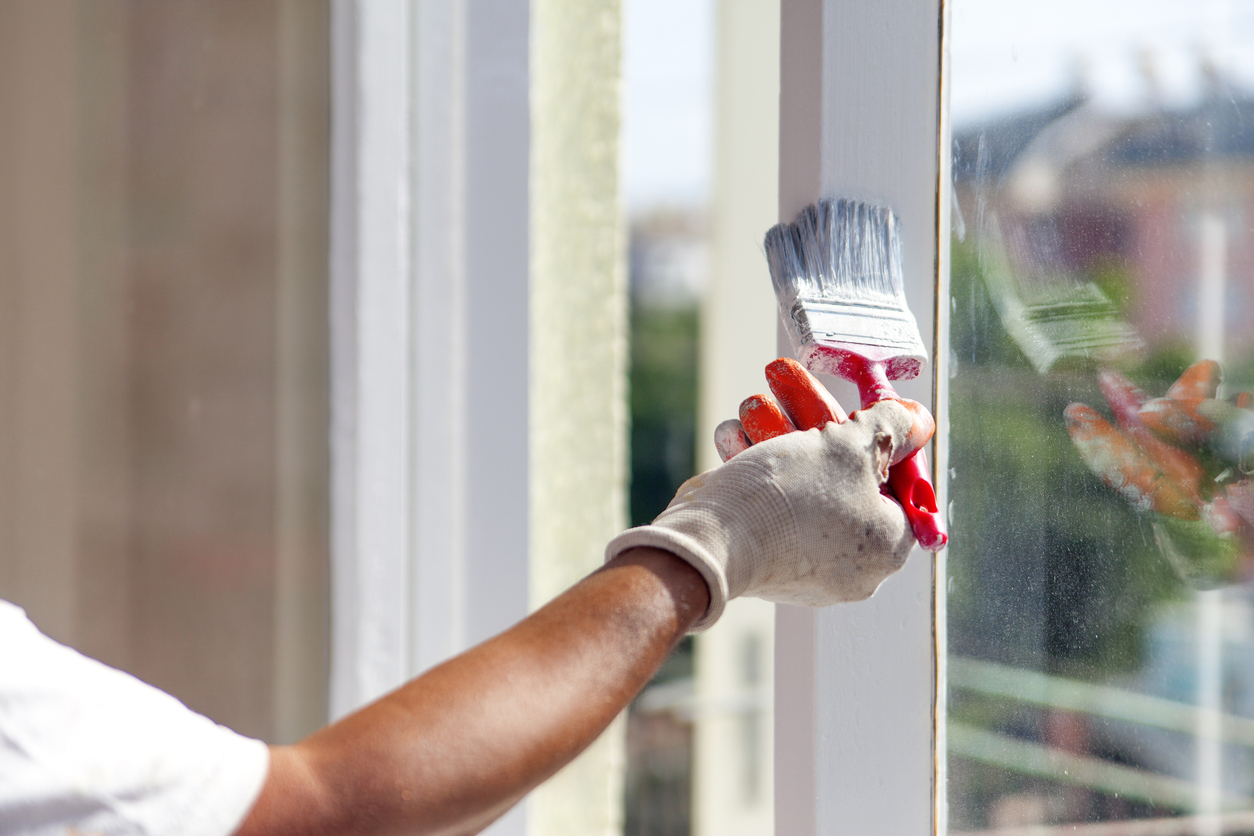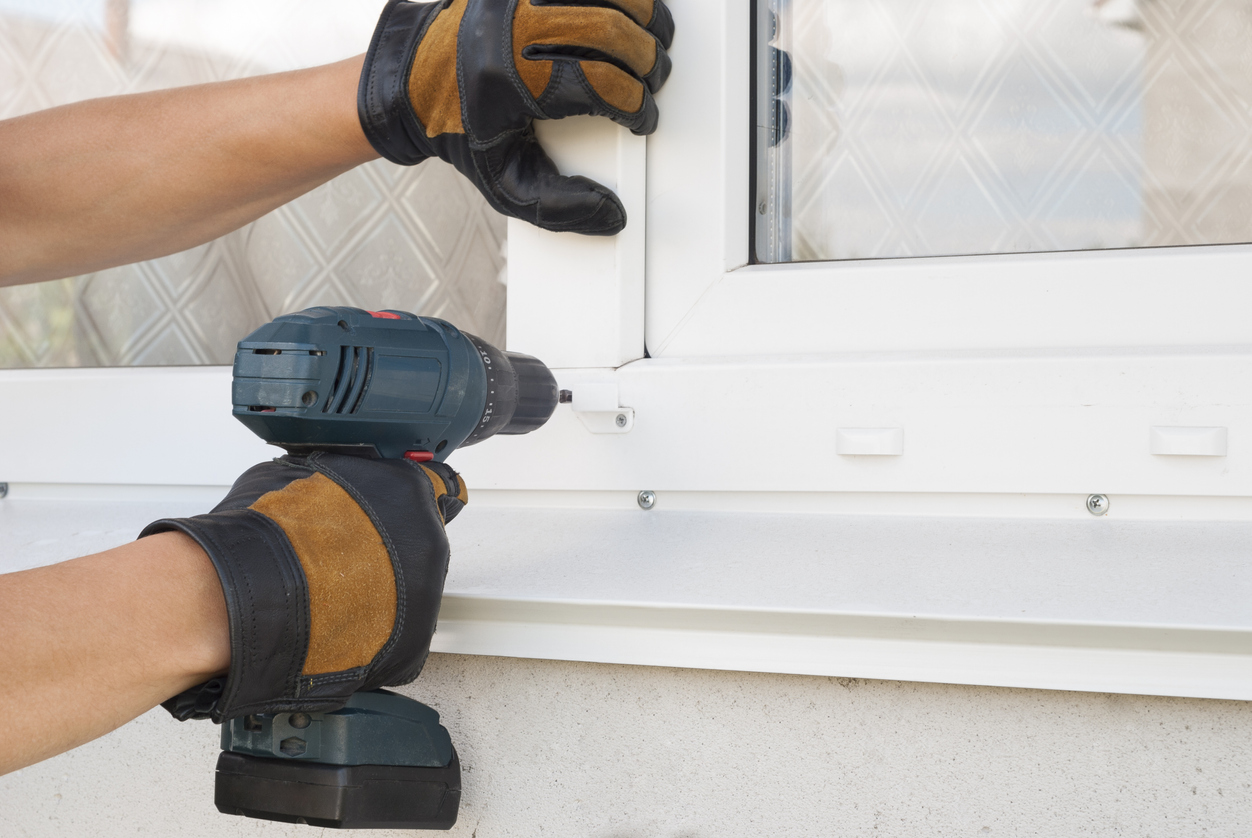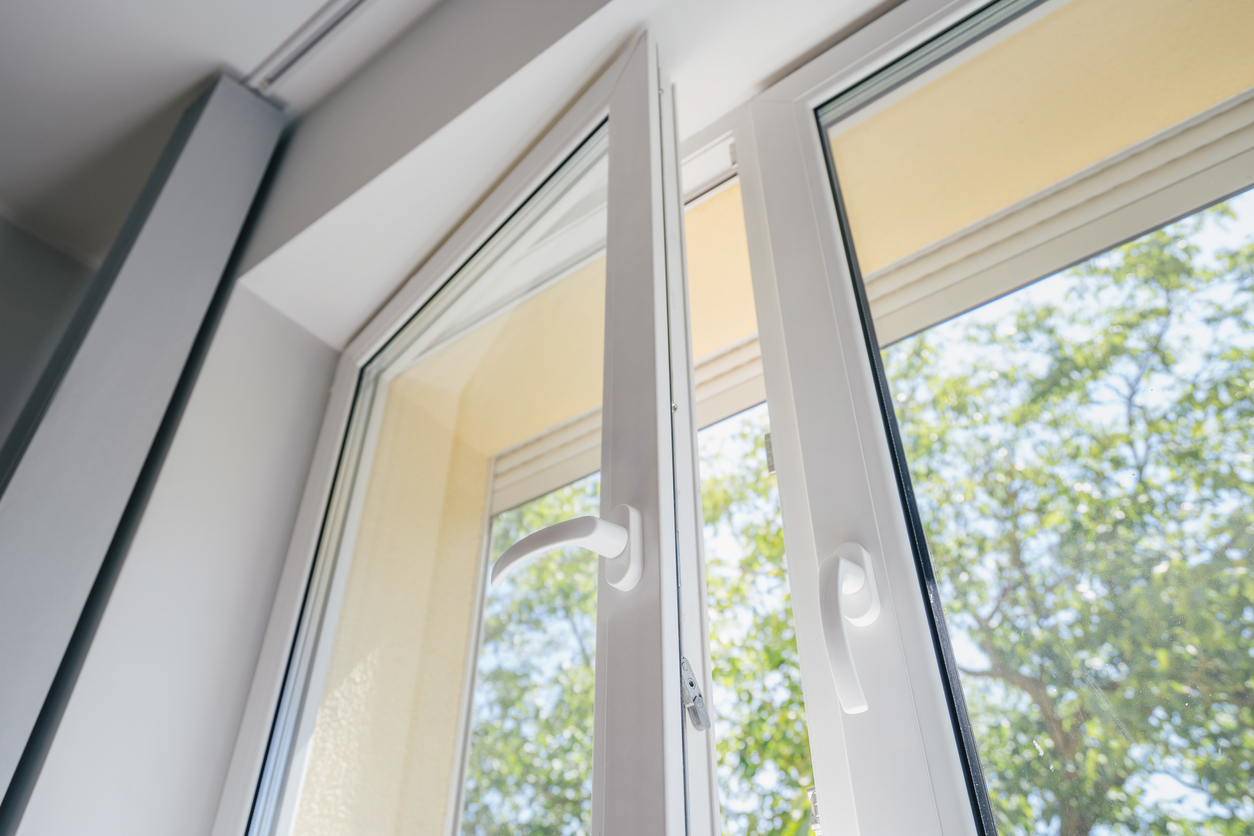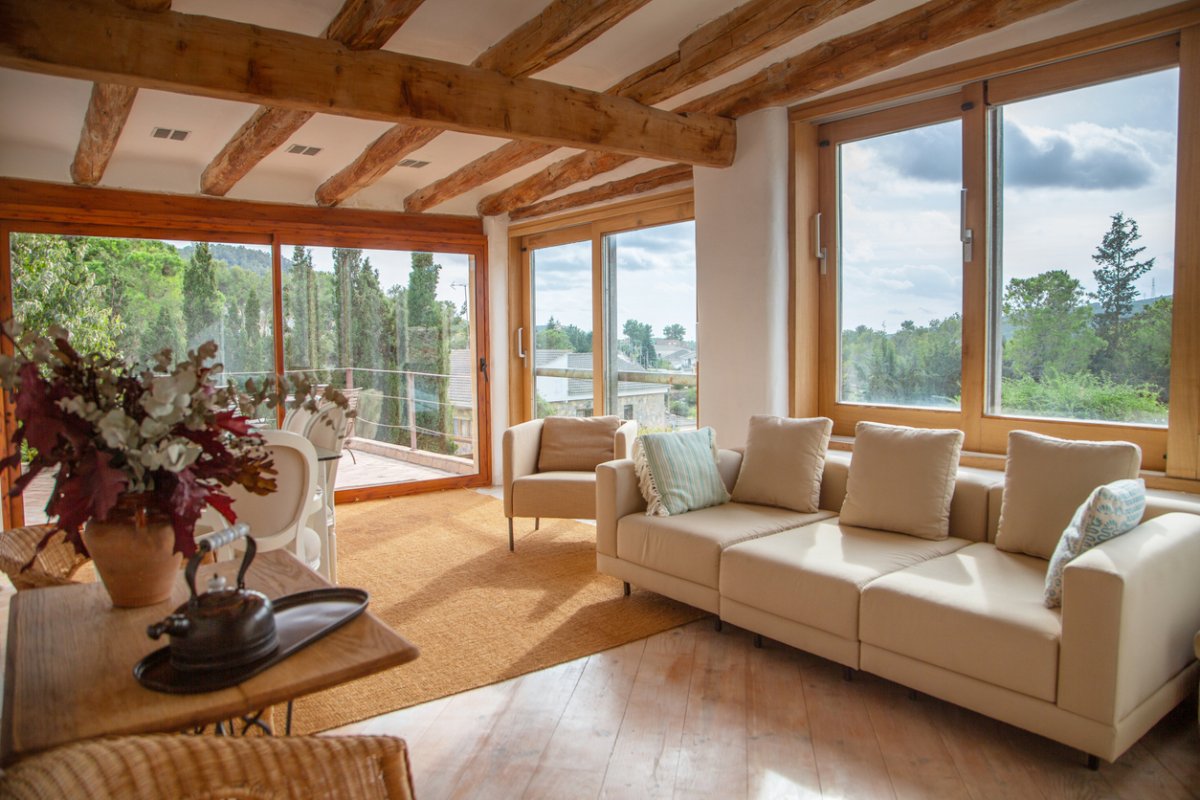We may earn revenue from the products available on this page and participate in affiliate programs. Learn More ›
Whether you’re replacing old windows or fitting them in a new build, choice of material is critical. The pros and cons of vinyl over fiberglass and aluminum have already been explored in other articles, so let’s now compare wood vs. vinyl windows.
Vinyl windows are actually made of polyvinyl chloride, better known as PVC. It’s a durable, light, and versatile material used in everything from car upholstery to cable insulation, while wood windows are the natural, more sustainable choice. Fast-growing Douglas fir and pine are often used for window frames, though some of the best quality windows use cedar and mahogany.
RELATED: 14 Types of Windows Every Homeowner Should Know
Both types of windows are highly durable, but wood windows require more upkeep than vinyl.

Much depends on climate when comparing vinyl vs. wood windows, but wooden windows generally need to be replaced every 20 years or so. PVC is less affected by heat, cold, or moisture, so vinyl windows can last between 30 or 40 years before needing to be replaced, considerably longer than wood.
Across their lifetime, wooden windows need regular care to combat insect damage and prevent rot. Checking a wood window frame’s condition doesn’t take long, but it should be done annually. In areas with particularly hot summers or cold winters, repainting should be expected every 5 years.
On the other hand, if you choose vinyl, you’ll have virtually maintenance-free windows. Vinyl frames may yellow slightly over time, but they otherwise need little more than a wipe-down with a cloth when cleaning the glass.
It’s worth considering replacing the rest of the house’s windows at the same time when replacing one or a few windows, regardless of which material you choose. If some of your home’s windows show wear, it’s likely that others of the same age also have weaknesses even if they aren’t immediately apparent.
Wood windows are more energy-efficient compared to hollow-core vinyl windows.
While it isn’t always the case, many vinyl windows are hollow. Even if the seals around the window are intact, the air inside this space allows cold from outside to more easily pass through. It also means heat can be lost from inside. Some types of vinyl windows are filled with insulation, so it’s important to check.
By contrast, wood replacement windows are solid, and the wood itself is very slow to absorb either heat or cold. As a result, they provide considerably better energy efficiency than hollow-core vinyl windows.
Many buyers also want to consider the environmental impact of both materials. Vinyl is a petroleum-based plastic. When their useful life is over, PVC windows take hundreds of years to decompose. Wood is a natural product that benefits the planet while it is growing, and it is biodegradable.
Vinyl window replacement costs less than wood window replacement.
The actual cost depends on a number of variables (window size, finish, and glass type), but vinyl replacement windows are typically anywhere from 30 to 50 percent cheaper than wood alternatives. This applies both to the windows themselves and the window installation costs when hiring a contractor.
There are several reasons for this. The raw materials for vinyl windows are cheaper, consistent in quality, and often produced via automation, making vinyl windows less time-consuming to make.
Wood is a more expensive raw material to start, and wooden window production involves more waste because each piece is grown, not manufactured. Additionally, wood manufacturing processes require higher skill levels, meaning this type of window not only takes longer to make but also involves increased labor costs.
Wood is considered more visually appealing than vinyl when it comes to window materials.
Taste is a very personal thing, but many people find wood more visually appealing than vinyl. It’s also more tactically inviting, and it has a natural warmth that can impact the ambience of a home. Wood is the obvious choice for older buildings and homes, and, in some cases, it’s a requirement to preserve the original style of windows for houses on the National Register of Historic Places.
Another important consideration is the ability to change the look of a home’s windows. It’s relatively easy to apply stain or paint to wooden windows, quickly changing the look of the house if desired. While vinyl can be pre-colored during manufacturing, painting it is seldom recommended, even when applying a suitable primer. A consistent paint finish is hard to achieve on vinyl, and chipping and flaking paint are serious problems—especially in areas with hot summers or cold winters.

Vinyl window installation is considered more DIY-friendly compared to wood window installation.
If the existing frames are in good condition, then installing vinyl windows is a relatively straightforward task. Not only does it require less skill, but vinyl windows are around half the weight of an equivalent-sized wood window. Given that a contractor will probably charge upwards of $100 per unit, doing it yourself can mean substantial savings.
However, when existing window frames are damaged, or complete windows are being installed to an extension or new build, the job becomes more challenging. While still within the capabilities of those with some building expertise, it might be better to call in a professional window installer. That said, quotes for vinyl windows should still be lower than wooden alternatives.
Regarding resale value, vinyl windows offer a slightly higher ROI than wood windows.
As with many other wood vs. vinyl window factors, the resale value of either is subjective; personal preference once again plays a major role. However, after consulting numerous window suppliers, installers, and home improvement experts, the general feeling is that vinyl windows are more likely to appeal to prospective home buyers than wooden windows.
A possible explanation for this is the lack of maintenance involved. As vinyl replacement windows are less expensive, the comparative return on investment (ROI) is likely to be higher when selling your house down the line.
That said, the type of property and surrounding area also need to be taken into consideration, and care should be taken. Fitting vinyl replacement windows to some historic buildings might actually reduce their resale value, for example.

Vinyl-clad wood windows offer the best of both worlds.
Vinyl-clad wood windows, also known as composite windows, seek to offer the best of both worlds. They have a wooden core for thermal efficiency and the visual appeal of wood inside the home. Meanwhile, their durable vinyl exterior is weather-resistant and requires minimal maintenance.
Vinyl-clad wood windows are comparatively expensive, though they can last 30 years. There are even more advanced versions that use cellular PVC. Unlike vinyl, cellular PVC can be primed at the factory so it can be painted to match existing decor, both inside and out.
Wrapped windows are another solution involving additional window cladding trim, made from either vinyl or aluminum, being added to existing windows. This improves thermal performance and weather resistance, but it requires skill to do properly and is best left to professionals. In those situations, the best window replacement companies, such as Renewal by Andersen, can help take the guesswork out of installing new windows.
RELATED: How to Install a Vinyl Window


